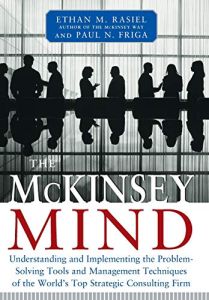
The McKinsey Mind
Understanding and Implementing the Problem-Solving Tools and Management Techniques of the World's Top Strategic Consulting Firm
Recommendation
Throughout the 1990s, consultants were the kings of business and one firm, McKinsey & Co., reigned above all others. In The McKinsey Mind, Ethan M. Raisel and Paul N. Friga, former McKinsey & Co. consultants, describe the methods that the famed firm uses in improving the performance of its consultants. These techniques, which relate to problem solving, management and communications, combine to produce the equivalent of a basic MBA textbook. But unlike much of your grad-school reading, this one is right on target to address your real-life business executive. As such, getAbstract recommends this book not just for its McKinsey cachet, but for its applicable approaches to business.
Summary
About the Authors
Ethan M. Rasiel was a consultant in McKinsey & Co.’s New York office. Among his clients were major companies in finance, telecommunications, computing and consumer goods. Paul N. Friga worked for McKinsey in the Pittsburgh office. His projects related to international expansion, acquisition and strategic planning, education, water, and other industries. He is Acting Director at the North Carolina Knowledge Management Center at the University of North Carolina.















Comment on this summary